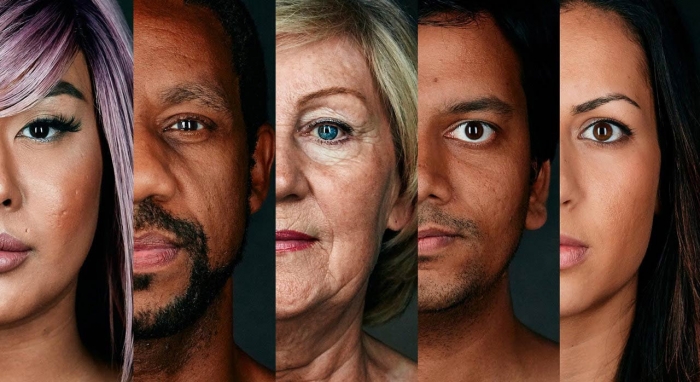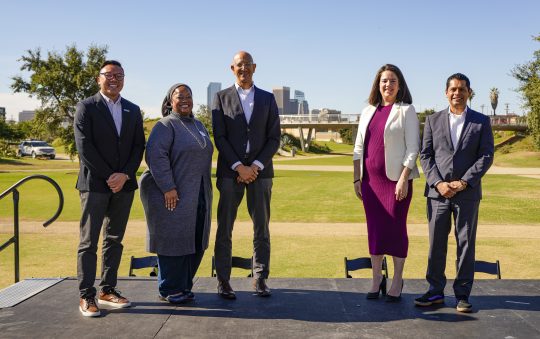
On Monday, the L.A. Sentinel and other media outlets attended a virtual press briefing on healthcare disparities. A recent analysis conducted by Health Metrics and Evaluation (IHME) at the University of Washington School of Medicine revealed inequities in healthcare spending among race and ethnic groups. The study showed White Americans gaining the most from healthcare in comparison to other races. It also revealed minorities are least likely to receive outpatient services or prescription drugs.
The press briefing was attended by health officials that included Dr. Joseph L. Dieleman, associate professor in the Department of Health Metric Sciences at the University of Washington and lead author of the study, Dr. George Mensah, director of the Center for Translation Research and Implementation Science, Dr. Amelie Ramirez, P.H., M.P.H, director of the Institute for Health Promotion Research and the Salud America! program at UT Health San Antonio and moderated by Susannah Masur, who works with the communications team of IHME.
“The lion share of healthcare resources in this country is used for White, non-Hispanic population,” said Dieleman according to information from 2016. “We see that 73 percent of health spending was on people who identify as White, non-Hispanic and that’s relative to 61 percent of the population that was surveyed in the data that we used.”
The research conducted was gathered from surveys and organized into four different categories which included accumulated data from polls, standardized estimates from data, types of healthcare and disease. The study looked at information from 2002 to 2016, which revealed $2.4 trillion in spending in healthcare.
“Right from the onset we see that a disproportionally high amount of spending in on the White, non-Hispanic population,” said Dieleman. “The other two of the five ethnicity categories that have the most spending both have 11 percent of the spending in 2016 that includes the Black, non-Hispanic population, which is about 12 percent of the people and the 11 percent also of the spending on Hispanic population, which makes up 18 percent of the population in 2016.”
Dieleman further stated, “This study provides a clear picture of who is benefiting from and who is being left behind in our healthcare system.”
The study reveals that in 2016 White, non-Hispanic Americans received health services representing 72 percent of all healthcare spending, despite comprising only 61 percent of the population. Hispanic and Asian Americans received the least spending relative to their proportion of the population: Hispanic patients benefited from 11 percent of healthcare spending despite accounting for 18 percent of the population, while Asian, Native Hawaiian and Pacific Islander individuals received 3 percent of spending while making up 6 percent of the population.
“People of color are likely to be uninsured or have restrictive insurance policies,” said Ramirez. “As of 2019, only 8 percent of White Americans, under the age of 64 are uninsured but, when you compare that to 11 percent for Black Americans, to 20 percent for Hispanic Americans and 22 percent of our [Native American] and Alaskan Native populations, those differences are large.”

Ramirez added, “Latinos in particular often lack access to high-quality healthcare and are among the least likely of any racial or ethnic group to visit the doctor when they have a medical issue. As a result, they suffer from poorer health outcomes on a range of measures. This study highlights the urgent need for new investments in Latino health.”
While spending on African Americans was roughly equal to their share of the population – they received 11 percent of healthcare spending, while making up 12 percent of the population – it was skewed significantly toward emergency and inpatient care, suggesting that they do not receive care until they are experiencing advanced illness. Specifically, they received 26 percent less spending on outpatient care, but 12 percent more spending on emergency department care.
“Much of these findings should not have come as big surprise to all of us,” said Mensah. “For example, the Agency for Healthcare, Research and Equality, they publish every year some of the objective measures of healthcare quality that they track for the whole nation.
“The most recent report showed that for about 40 percent of the objective metrics of quality of healthcare that they track, African Americans, [Native Americans] and Alaska Natives received worse care than Whites, that’s U.S government data and it’s not very different from the data that was published the year before and the one published the year before that.
“It’s very clear to all of us that there isn’t any silver bullet, we’re going to need a comprehensive set of actions that can address this and we have to with active community engagement, outreach, addressing misinformation.”
Mensah added, “COVID-19 has exacerbated health disparities. This paper adds to existing research that illustrates the need for comprehensive solutions to address underlying barriers patients face in achieving optimal health and benefitting from optimal health care.”
On addressing other healthcare issues, Ramirez stated, “We need healthcare providers to be culturally competent. Just because a provider may speak Spanish doesn’t mean that a patient will feel comfortable speaking with them. We need to look at opportunities to support and train our providers that will reflect our community demographic.”
The study, conducted by researchers from IHME, was published Tuesday in the Journal of the American Medical Association. Dielemen shared there is an interest in contemporary numbers and that going forward, there will be research expanding into 2019 and into 2020 on the impact of health spending.







